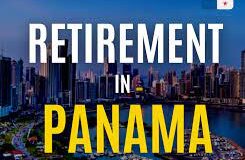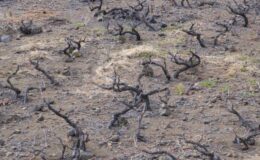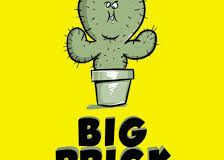Who really owns land in PANAMA? A Grift that has gone for years. But I know who owns “POLO” Joe.
- By : James Bryson
- Category : Infrastructure, Land Ownership

‘Who are the owners of the land in Panama?’ second edition
No government plan of the last three administrations proposes a way out of the unequal distribution of land in Panama, while on the contrary, it worsens

It is an investigation that describes and analyzes in a delimited temporal space that begins in the eighties of the last century, until covering the two decades of the present century, the deployment of the concentration of land in a small number of owners.
Records of the VII National Agricultural Census (2011)
The latest census records show an abysmal asymmetry: 73% of the farms (where the peasants live), have only 5% of the agricultural area. At the extreme pole, close to 2% of the farms (greater than one hundred hectares), own a little more than 45% of the land used for agricultural and livestock purposes. (see box)
Corrected Edition

We call this edition with imprint 2021 corrected, for the following reasons that we detail:
– From the reading of the work: “The great families in Panama, volume I and II”, we clarify the unfolding of the genealogy of the Martinelli family, whose trunk begins with the marriage between Francisco Martinelli Martinelli with Sara María Pardini Dutari in 1904.
Nine children were born to this union: Enrique, Lorenzo, Francisco, María Sara, Eugenia Felicia, Ricardo, María Elida, José Ramón and Emma Martinelli Pardini. In the first edition, section III. Process of buying and selling farms by important groups in the province of Veraguas.
The last group that is analyzed, we erroneously placed the “E. Martinelli Group – Della Togna.” Thus, only the eldest son of the Martinelli-Pardini trunk is analysed, he is Enrique Martinelli Pardini married to Victoria Assunta Della Togna and excludes the other eight children. In the new edition, it has been titled “E. The Martinelli-Pardini descendants”.
– Another basic error appeared in the section “VII. The agrarian bourgeoisie”, which supposed the existence of powerful agrarian sectors with their own project, which differentiated it from other bourgeois sectors.
In the 2021 edition, the corrected title: “VII. Powerful individual capital in the Panamanian agricultural sector”. There, in the first lines, it is clear that these powerful individual capitals, which have interests in the Isthmian agricultural sector, are part of the local hegemonic bourgeoisie and, therefore, do not form a differentiated social sector, that they have an autonomous country project.
updated edition
– In this second edition, all the boards of directors were updated, showing the changes in them, as they appear in the database of the Public Registry of Panama.
– The second corrected and expanded edition (2021), allows us to understand the entire process of constitution of the large estates and economic groups that have interests in Panamanian rural society, whose balance that we relieve, is the ruin of the peasants. It is on this socioeconomic foundation that the economic policy guidelines are established, whose accent is placed on the supremacy of the market, in the midst of the use of food as a geopolitical weapon, mainly by the declining power (United States).
Recent strategic plans and land distribution
In the five-year period 2009 – 2014, which corresponds to President Martinelli, it is possible in his government guidelines, a mention in section 3.2 Tourism, the declaration of “making land titling more efficient.”
Clarifying: “The recent approval of Law 71 will allow the titling of possessory rights on islands and coasts in an agile and transparent manner, thus facilitating land tenure for future tourism developments.” It is evident, the need to launch the market for buying and selling land, possessory rights, mainly in marine-coastal areas, which can be acquired by investors to build million-dollar tourist projects.
In point 3.3 on agriculture, the following minute is written:
– Create institution for marketing.
– Expand irrigation.
– Construction of production and access roads.
– Development of cold chain.
– Restructure incentive and assistance policies.
In the plan of the administration of Juan Carlos Varela R. (2014 – 2019), it can be read in axis three: “As part of our State Agricultural Policy, we will adopt a series of very specific measures to:
– Put an end to oligopolies that unfairly increase the price of the basic food basket and other basic necessities;
– increase the access of our small and medium producers to seed capital;
– create irrigation systems;
– offer technical assistance based on the best practices of other countries, to help our producers develop local distribution and export chains for their products that allow them to benefit from fair trade and reap the benefits of Free Trade Agreements with the United States and other business partners;
– Develop new programs in the regions to help our brothers from the original towns to sow on their own land and harvest for themselves;
– Create collection centers close to agricultural production areas; Y
– Build the access roads that are needed, (…)”.
We see the absence of concrete guidelines to deal with the concentration of the best lands in a small number of large owners. In the current Administration Plan (2019 – 2024), there is no sentence at that strategic level, which, standing to derive a public policy, capable of confronting the monopolization of land in Panama.
We conclude that no government plan of the last three administrations proposes a solution to the unequal distribution of land in Panama, while on the contrary it worsens.
The author is a Sociologist. Professor and researcher at the University of Panama

Social Thought (PESOC) is made up of a group of professionals from the Social Sciences who, through their contributions, seek to promote and satisfy needs in the knowledge of these disciplines. Its purpose is to present to the population topics of analysis on the main problems that afflict them, and to contribute with the strategies of solution programs.



No Comments